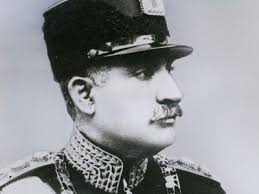One of the many peletons at Longchamps in Paris
When I ride in Paris in big pack, known around the world as a peloton, the behavior is as universal as the French word that describes the group. In Paris on two consecutive days, I rode with big groups—twenty to forty riders—who I never met nor shared a common language with, but I could ride inches away from them to the side and front to back for miles with no problems. I speak and read some French, but not at 90% heart rate.
The behavior of the riders was completely predictable. They signaled when leaving the group. When I was in a fast group, riders from slower groups would speed up beside our group, then move into a gap if one appeared, or join our group from the back. Riders moved slightly out of the group to spit or for snot rockets, unless they were in the fastest groups, then they did their best to go straight down and kept on pedaling at a furious pace.
In the fast groups, the toughest riders are out front, the rest of us draft as best we can and hang on. These groups formed straight pace lines with riders occasionally dropping off the front to rest at the back. In the slower groups, a younger guy would occasionally pull out of the pack and attack the group, speeding away or becoming the front of a now faster group. Sometimes they stayed at the front and raised the speed of the group for most of a lap. Other times, they dropped to the back again as soon as they were caught.
One beautiful thing to watch is how groups behave when they are overtaken in the narrow stretches at either end of the loop. Most of the two miles is a 30-foot wide road with room for fast groups to sail past slow groups. But at each end of the loop is a short stretch that is just eight feet wide. On the west end this 20-meter stretch is a downhill curve. On the east end is a 100-meter lane before the road turns south in front of the entrance to the horse racing track inside the Longchamps oval.
A group spread out five wide approaching the narrow sections will squeeze down to a pace line. The faster group does the same and two long lines either speed through a right bend or share a lane side by side in smooth parallel lines of heavy breathing and 100 rpm pedaling.
Most of the riders wore black cool-weather tights and jackets. The temperature was in the low fifties both days. A few, the real racers in the groups, wore jerseys and tights from local race teams. The sponsors, as well as I could make out, were a plumbing store or an electrical shop in the city of Paris or a suburb. Some of the slower riders, and some of the guys speeding out to attack the group, wore the colors of Tour de France teams from a few years ago. The fan-boy attire is universally the sign of a rider who is not a member of a local team.
Unlike America, where closed roads and bike paths draw roller bladers, scooters, dog walkers, strollers and any number of rolling hazards to fast moving bikes, the training race loop is by tradition for cyclists. Runners use the path on the inside of the loop. If they run on the pavement, they jump off when a large pack approaches.
Also, bike culture becomes more and more uniform among the faster riders. People going 9 mph commuting to work in flat cities like Amsterdam, Beijing or Bangkok ride any number of bikes sometimes older than the rider. The fastest riders have carbon frame bikes of recent vintage with components very like everyone around them. They dress alike, except as noted above, and spend a lot of time training to be faster and better on the bike.
I love the riding. I love bike culture. And I love being able to fit in with bicyclists in other countries around the world in the common culture we share. The wheel thing, one could say.

















